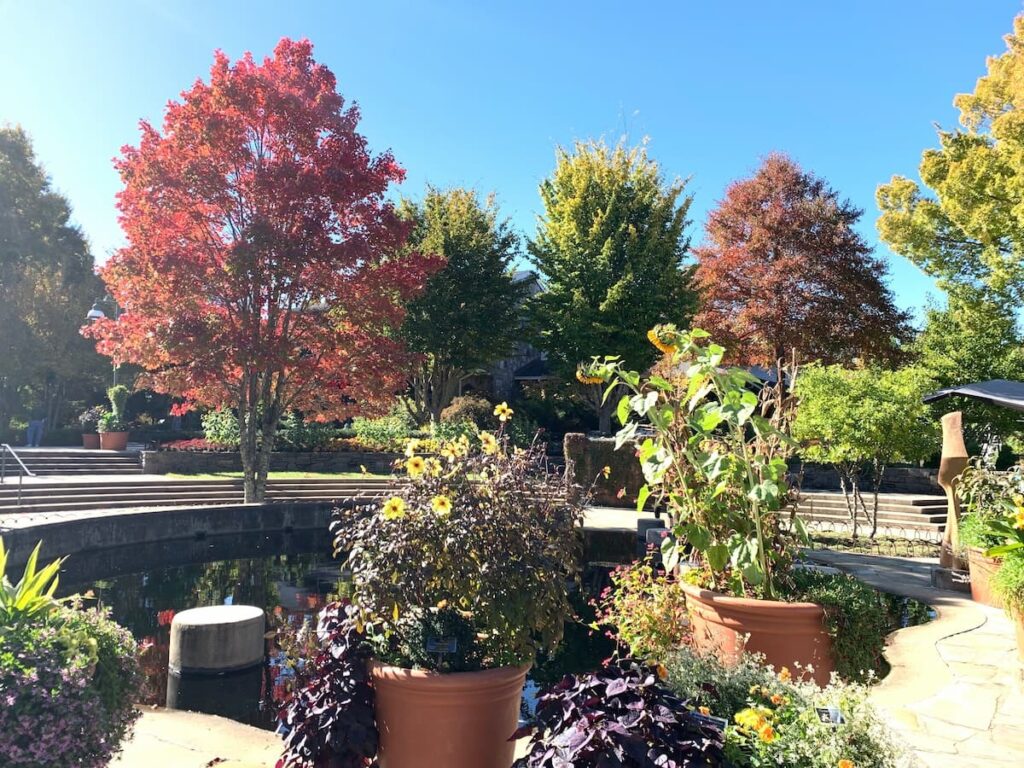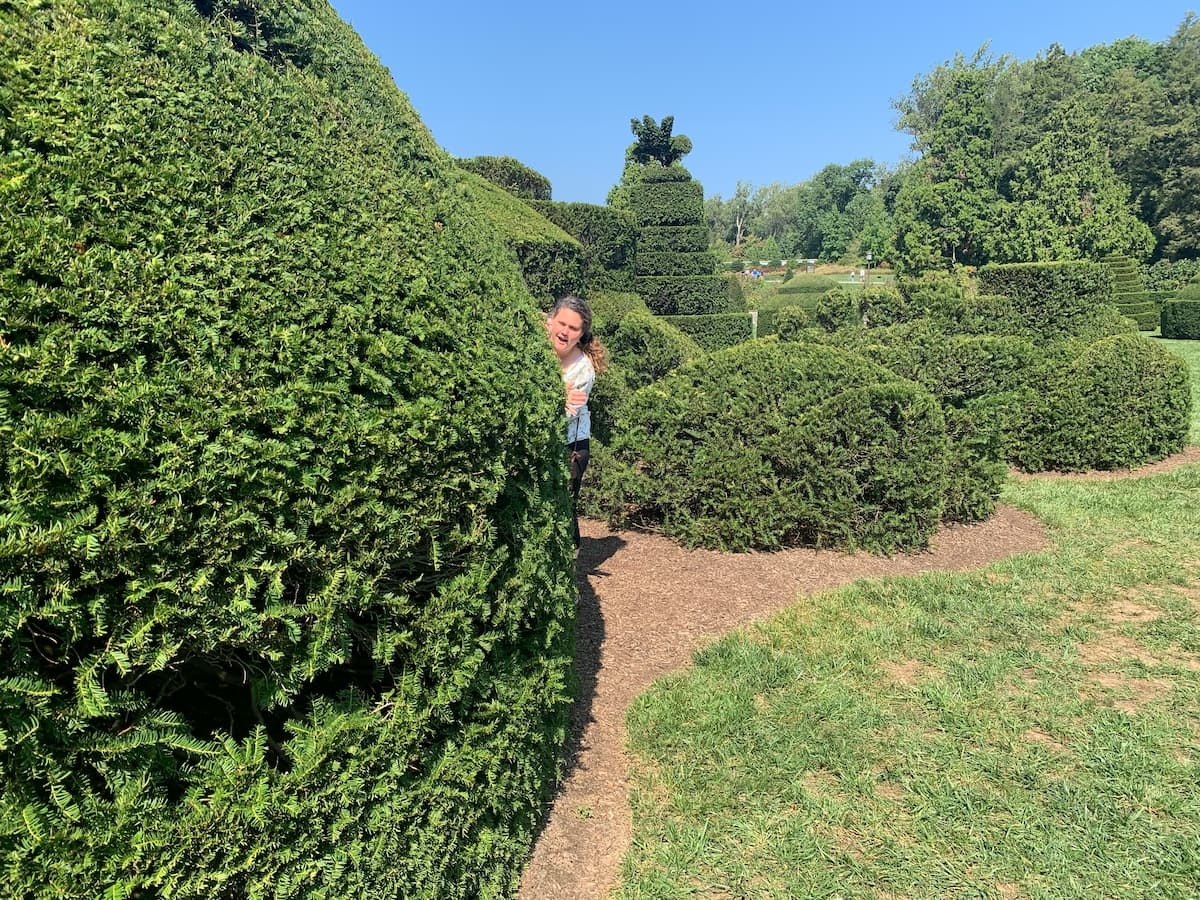My wife and I love to visit botanical gardens! And not just because they’re serene, pretty places to spend the morning or afternoon… We also love gleaning ideas from these places on how we’d like to enhance our own yard.
Granted, some of the incredible things we see when visiting botanical gardens around the country are simply too grandiose or expensive for our yard.
For example, trying to reimagine in our own landscape the outstanding topiaries and scenery from Longwood Gardens near Philadelphia is out of reach for us right now. In many other cases the plantings and arrangements we enjoy are infeasible for our yard because of sheer cost, space constraints, or climate considerations.
Where we live in Central Florida, we have an interesting array of horticultural challenges and opportunities. Go 50 miles south and you’re squarely in lush subtropical climes where freezes are scarce and broad-leafed flora thrive under the shade of palms. Head 50 miles north and you’re in rolling terrain forested by deciduous trees bearing nuts and inklings of fall color in the autumn; there, continental-influenced weather patterns bring at least a few regular freezes and many frosts each year.
This means that we’ve got to get creative if we want to incorporate any ideas from our visits to botanical gardens, whether they be local to us or in another state. Thankfully, there are many ways to draw inspiration when you visit botanical gardens, even if you live in an apartment or townhome and have only a small patio or porch for growing potted plants.
What I Look For When I Visit Botanical Gardens
Sure, I visit botanical gardens to get away from some of life’s stresses. But that’s also why my wife and I have spent years turning our backyard into another living space of our home. So it makes sense that our botanical garden trips have a little sense of personal purpose: how do we take some of these places home with us?

Check out the scene above from the North Carolina Arboretum near Asheville. What’s the first thing you notice in this photo? For me, it’s the variety of color — some trees were donning autumn hues when I took this photo one October a few years ago. Other plants — their leaves still summery green — are bearing flowers.
I like this mixture of fall color and flowering flora. Certainly, there are ways my wife and I can introduce this mixture of foliage and vegetation in our Central Florida yard — yes, even the natural fall colors.
Mind you, replicating this exact scene would be impossible for us in our yard, as several of these plants just don’t grow well in our climate, rated Zone 9B by the United States Department of Agriculture (USDA). And even if we lived near Asheville, imagine what it would cost for us to arrange our landscaping exactly like you see in that photo, concrete water feature and all! Yeah, forget it…
But, guess what? We can grow native Florida maples that turn red in autumn. Also thriving where we live are sycamores, welcoming autumn with their yellows. Sweetgums are flush in purples when October and November roll in, while bald cypress flash their shades of orangey rust.
Yeah, don’t let them tell you Florida doesn’t get fall colors. We do — if you know where to look for it...
What About Flowers?
Trees may make this world a prettier place with their springtime greens and autumnal hues. But what would life be without flowers?
Gratefully, my wife and I have multitudes of options for growing flowering plants. Well, for the most part, anyway.
See, my wife loves dogwood, and so do I. If you don’t know what a dogwood is, please look it up. It’s a smaller tree bearing gorgeous four-petaled flowers — usually creamy white but sometimes pink, red, or other colors. We’re right on the southern edge of the dogwood’s usual growing range. We tried to grow one a few years ago with little success.
Ditto for lilacs, which send out bushy spikes of fragrant flowers. My father-in-law, in the Tampa area, has been successful at keeping a lilac green and growing, but it’s tough to get these plants to flower in our climate. Thankfully, my wife and I learned of the shoal creek chaste tree, which not only mimics the growth habit and floral fragrance of the lilac, but it also grows just fine in our backyard.
Then there are the many, many kinds of flowers that we enjoy seeing when we visit botanical gardens and that we’d never have to doubt would do well here.
Among these? Sunflowers! Ah, yes, the sunflower… If there’s a plant that almost anyone can have success with (even me), it’s the sunflower. Imagine, a flower that’s good for pollinators and that also creates an incredible tasty snack — sunflower seeds! And you can grow these versatile flowering plants in a pot or planter — just about anywhere with the right temperature and light situation.

A Smorgasbord Of Edible Plants At Botanical Gardens
And speaking of eating plants… I like edible plants, but my wife just absolutely loves them! We have a miniature grove of tropical fruit trees and plants along with a couple of beds that may host veggies, herbs, and spices from time to time.
Some of these plantings hail from our own concepts — I should say my wife’s creativity. But I’d be remiss if I didn’t share that some of the ideas on what we grow in our yard to eat are harvested from visiting botanical gardens.

Basil, rosemary, fennel, oregano, you name it, we’ve grown it — and eaten it! You can garner some amazing ideas on what types of edible plants are out there when you visit botanical gardens. I’m shocked at some of the plants we can cultivate in our own edible garden, including different kinds of teas and coffees. And these are all things I discovered by visiting Florida Botanical Gardens near me.
You might just find yourself rethinking what you can do with your own landscape if you visit botanical gardens, too. So, what say you? Maybe today’s a good day to visit your local botanical gardens!
